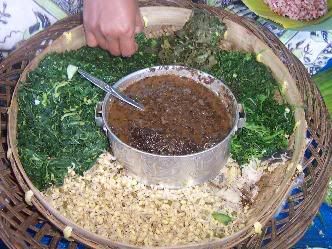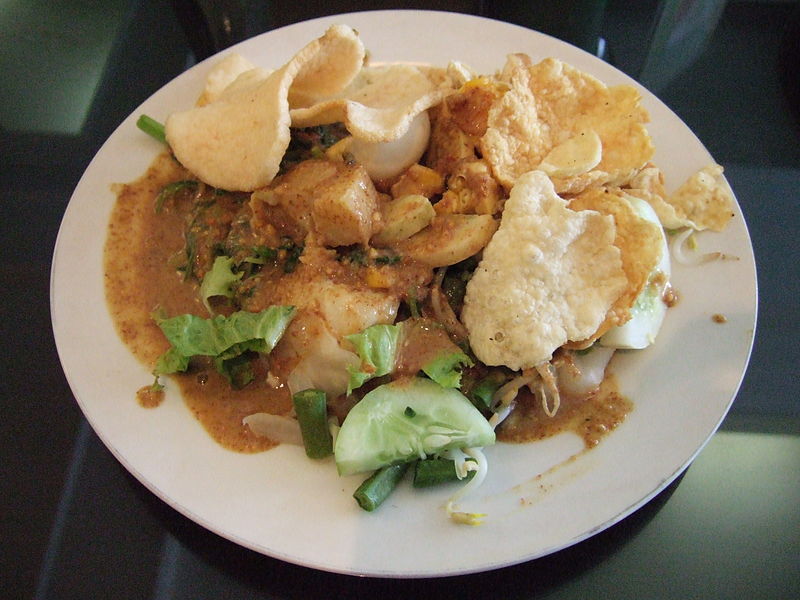I just found out....there is no easy reference for decommissioned RMN ships before and after Merdeka. So for those interested, check this out.
HISTORY OF THE ROYAL MALAYSIAN NAVY
The Royal Malaysian Navy has her origins from the Straits Settlement Naval Volunteer Reserve (SSNVR) which was established with 54 Malay volunteers to assist the Royal Navy in the defence of the Straits and Malay states territorial waters. The SSNVR was formed in Singapore on 27 April 1934 and was initially located at the Singapore Volunteer Corps Headquarters. On 18 January 1935, the British Admiralty presented her with a WW1-era Flower-class escort sloop, the HMS Laburnum, to serve as the Reserve's Headquarters and drill ship that was based at Teluk Air Basin, Singapore. This unit was later expanded with a Penang branch established in 1938 and was subsequently renamed as the Malayan Royal Navy Volunteer Reserve (MRNVR).

HMS Laburnum - The pride of the MRNVR
As World War II approached, the British quickly formed a Malay Section of the Royal Navy with the absorption of MRNVR members and fresh recruits. Established on 4 September 1939,it was called the Royal Navy Malay Section or simply as the Malay Navy. The section was based at HMS Pelandok training camp in Sembawang naval base, Singapore. The Malay Navy expanded rapidly from 400 men in 1939 to 1430 men in 1941. However, at the outbreak of the war, only 158 British officers and 650 local seaman remained as the others had finished their contract by that time. When Singapore fell to the Japanese in 1942, only about 150 men of the Malay Navy were safely evacuated to Ceylon (Sri Lanka), East Africa and India. These men later returned with the Liberation Force in September 1945 and a total of 650 men reported back for duty after the war. Unfortunately, due to post-war financial constraints, the Malay Navy was disbanded in April 1947.

HMS Test became the nucleus ship of the Malayan Naval Force
At the outbreak of the Communist Emergency, the Malay Navy was reactivated on 24 December 1948 when the Malayan Naval Force regulation was officially gazetted on 4 March 1949. The main function of the Malayan Naval Force(MNF) was coastal patrol in order to stop the communist terrorists from receiving supplies from the sea. In addition, the Force was tasked with guarding the approaches to Singapore and other ports. The MNF was based at an ex-Royal Air Force radio base station in Woodlands, Singapore. that was initially called the 'MNF Barracks' but was later renamed as the HMS Malaya.
 HMS Pelandok of the MNF
HMS Pelandok of the MNF
The MNF was firstly equipped with a River-class frigate, HMS Test that was used as a training ship but by 1950 had in service an ex-Japanese minelayer HMS Laburnum, a Landing Craft Tank (LCT), HMS Pelandok, motor fishing vessel HMS Panglima, torpedo recovery vessel HMS Simbang(Erratum) and several seaward defence motor launches (SDML). The vessels of the Force were later renamed with the prefix Malayan Ship(MS) to differentiate them from Royal Navy units.

The main patrol units of the MNF are SDML's like above
In May 1950, the deactivated Battleship HMS Malaya ship's bell was presented by the The Royal Navy to the MNF as a mark of honour and appreciation for their service. The Malayan Naval Force was again honoured when in August 1952 Her Majesty Queen Elizabeth II, bestowed the title 'Royal Malayan Navy' Singapore to the MNF in recognition of her sterling service in action during the Malayan Emergency. The navy's ships now carried the prefix Her Majesty's Malayan Ship(HMMS) and subsequently flew her own white ensign on 31 December 1956.

HMMS Penyu was one of the larger vessels in the MNF fleet
The Royal Malayan Navy Singapore that was then still part of the Royal Navy, was eventually transferred to the independent Federation of Malaya on 12 July 1958 and renamed the Royal Malayan Navy(RMN). With the hoisting of The Federation naval ensign eleven days later- the White Ensign modified by the substitution of the Union Jack with the Federation flag in the upper left corner- the RMN was thus made responsible for Malaya's maritime self defence. The new navy bravely shouldered the responsibility with only an operational and training base at HMMS MALAYA and a small coastal fleet of 1 LCT, 2 Ham-class inshore minesweepers, 1 coastal minelayer and 7 SDML's on free transfer from the Royal Navy. In the first year of independent service, it was decided to rename all the ships in the fleet according to the names of the Malay states. On 3 November 1961, the young navy was again honoured when it was declared that her ships were now to be called with the Malay prefix Kapal Diraja(K.D.) as a mark of her independence since the use of HMMS was considered as a relic of colonialism. The new prefix also established the navy's national identity for the first time.

KD Hang Tuah was the first frigate class warship the RMN had
With the formation of Malaysia in 1963, the Royal Malayan Navy became known permanently as the Royal Malaysian Navy. However before the new navy had a chance to be strengthened, it had to face her first conflict in the confrontation(Konfrontasi) with a superior-equipped Indonesia over its objection to the formation of Malaysia. Fortunately, the Royal Navy maintained a massive deployment throughout the conflict as a shield in defence of her former colony. To face the challenges posed by the Indonesians, the RMN was further developed with the assistance of the British. Therefore in the mid-Sixties, the modest Royal Malaysian Navy's inventory comprised entirely of British-supplied ships: one ex-Royal Navy Loch class frigate, four Ton-class coastal minesweepers, four Ham-class inshore minesweepers, 10 Kedah/Sabah class Vosper patrol boats and a newly delivered LCT, in addition to the remaining 3 ex-MNF SDML's. These ships put the RMN in the forefront of the defence of Malaysia by securing her territorial waters and assisting the land forces in their operations against the Indonesian infiltrators.

The KD Sri Langkawi was the forerunner of the navy's amphibious force.
The RMN continued not only to develop her assets throughout the Konfrontasi but also gained operational knowledge and experience from the conflict. This resulted in the RMN being entrusted to assume the responsibility of patrolling Sabah and Sarawak waters from the Royal Navy in 1966, one month after the conclusion of the confrontation with Indonesia. Having now learned of the need for constant preparedness, a gradual process of development was begun in order to ensure the navy is sufficiently equipped to face any challenges. To expand the range and firepower of her naval assets, the RMN purchased larger Kris class patrol boats and a squadron of Perkasa class torpedo fast attack craft (FAC-T) which all entered service by 1968.

Minesweepers like KD Brinchang also played a patrol role for the navy
However, the gradual development program changed following regional turbulence and the strategic withdrawal of the British Armed Forces from the region in the early 1970's. These events resulted in the implementation of the Armed Forces Special Development plan whereby the RMN operational strategy changed from one of coastal defence and law enforcement within territorial waters to a strategy of sea denial to the enemy, long-range patrol, monitoring, ensuring safe navigation against low-level threats (piracy) and escort and strike missions. The navy duly began a rapid force level expansion where landing ships, frigates and FAC squadrons were added to the Fleet. The RMN had also at this time entered the missile age with the retrofitting of the Perkasa FAC's with Aerospatiale's SS-12M missiles in 1971 and the acquisition of one Exocet missile armed fast attack craft squadron a year later.

Perkasa class signalled the modernisation of the Navy
This decade also marked the diversification of naval assets procurement away from Britain, the navy's traditional supplier when the French, Germans, Swedes and Americans also managed to supply their vessels and equipment to the RMN. The trend away from dependence on the British was further advanced by the assumption of full operational control of the navy by local personnel during the period. The RMN now faced the challenge of proving the capabilities of her local crew in running their own navy without expatriate commanders. Nonetheless, through a historical quirk the RMN still faced a unique problem of a sovereign nation who's navy and her major command and training facilities were stationed in another sovereign's territory, Singapore that had seceded in 1965, and not within Malaysia itself. In concert with these developments, the RMN established her own major base in Lumut in 1979 and fully shifted her fleet operations from the leased facilities in Woodlands, Singapore two years later. Next, two German made FS1500 Frigates, two Multi-Purpose Combat Support Ships, two Off Shore Patrol vessels and four Mine Countermeasure Vessels(MCMV) entered service in the 1980's, contributing to the enhancement of the RMN's fighting capability. However, the economic slowdown faced by the nation in the middle of the decade forced the cancellation of the planned acquisition of a follow on order of two each of FS1500 frigates and MCMV's. As most of the major vessels in the fleet are helicopter capable, a naval air wing was also established in 1988 with Wasp ASW Helicopters, making the navy one of the few in the region to be so equipped.
With an improving economy and a shift in strategic requirements, the RMN from 1991 changed their operational objective from a threat-based force to a capability-based force. Therefore in the nineties the RMN took delivery of four Laksamana class Corvettes and two UK built 'stealth' frigates to enable the navy to play a more offensive role in three-dimensional warfare. These programs were carried out as part of the process of transforming the RMN from that of a brown water navy into a navy capable of performing and carrying out extended blue water operations. The reason being Malaysia's geography requires the navy to have sufficient reach and capabilities for offshore surveillance and coastal defence. This is to ensure her effectiveness and the continued relevance of the navy in her dual function as a fighting force as well as a maritime law enforcement agency. As such, even though the Royal Malaysian Navy has had a chequered history of development, she can now face the future with confidence as the navy has been sufficiently modernised to face the challenges of the new millennia. The RMN can now stand proud as a navy to be respected, that can give as good as he gets.

 HMS Test became the nucleus ship of the Malayan Naval Force
HMS Test became the nucleus ship of the Malayan Naval Force HMS Pelandok of the MNF
HMS Pelandok of the MNF 
 HMMS Penyu was one of the larger vessels in the MNF fleet
HMMS Penyu was one of the larger vessels in the MNF fleet

 Minesweepers like KD Brinchang also played a patrol role for the navy
Minesweepers like KD Brinchang also played a patrol role for the navy





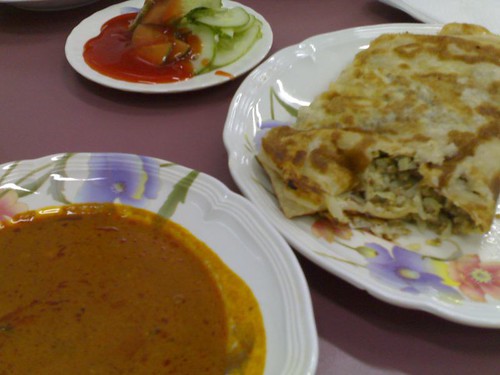


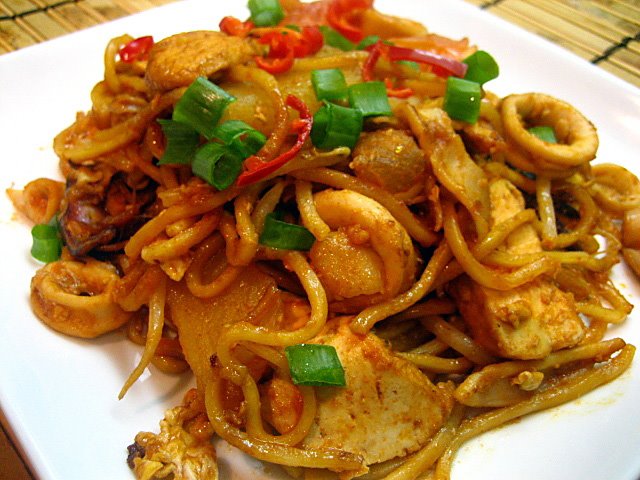
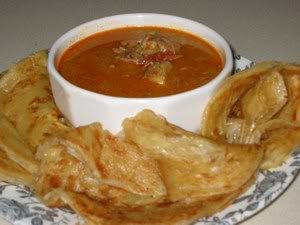




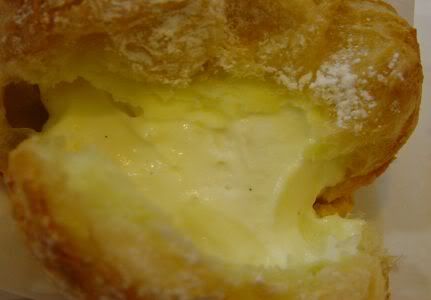




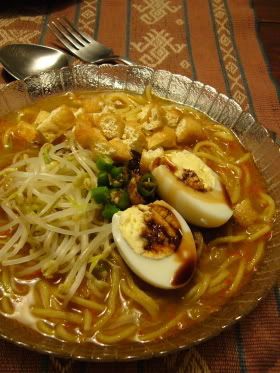

 mee bandung : mee yang kuahnya dimasak dalam kuali dan kemudiannya mee dicampur dan terus dihidang. Mirip mee bandong kedai siam.
mee bandung : mee yang kuahnya dimasak dalam kuali dan kemudiannya mee dicampur dan terus dihidang. Mirip mee bandong kedai siam.
